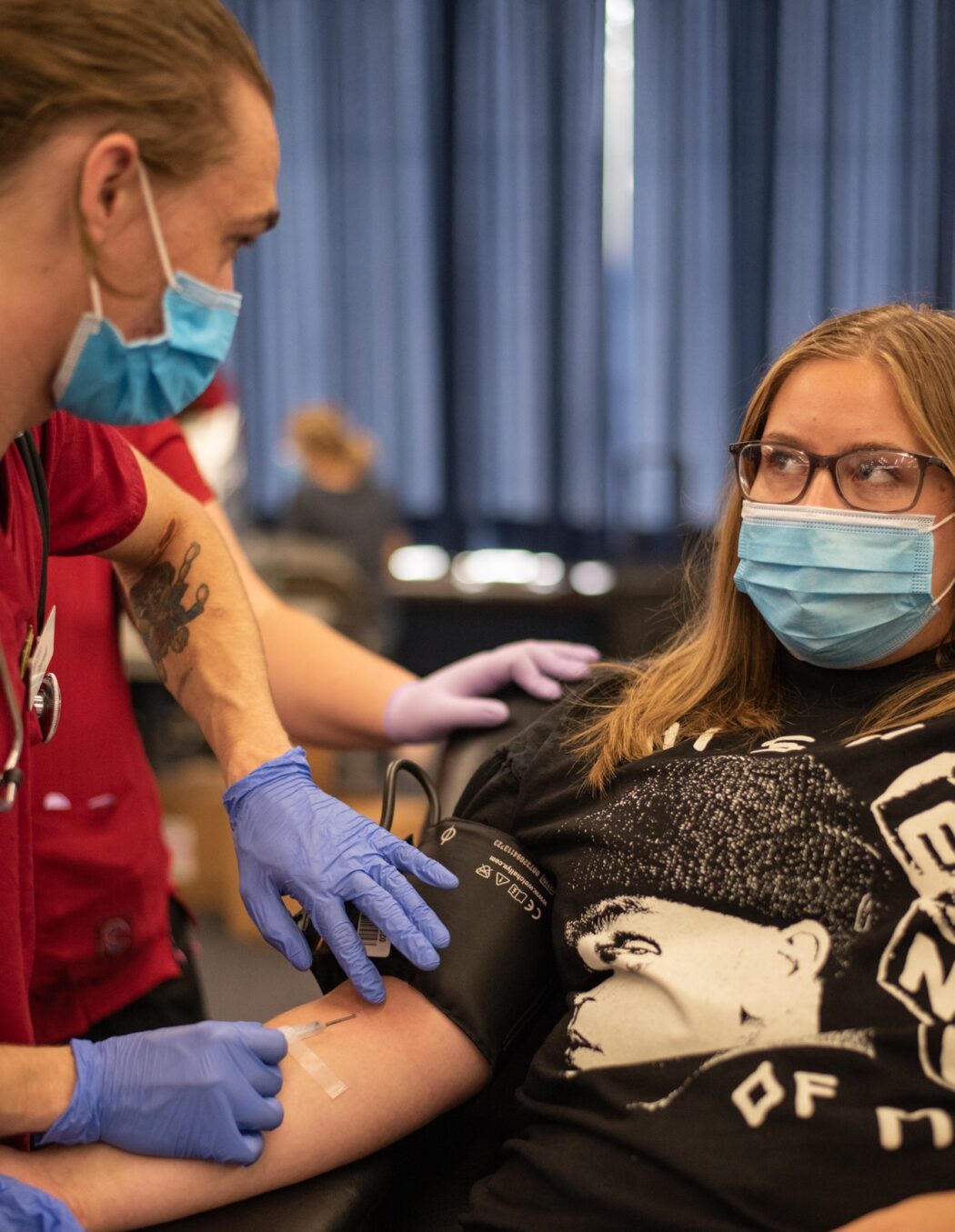USU set to compete in 20th annual blood battle against Weber State
Utah State University’s Aggies have donated enough blood to win the blood drive battle against Weber State University every year for the past 19 years — and USU isn’t planning on losing this year either, according to Bridger Esplin, the Aggie Red Cross student director.
The event will take place from Sept. 5-8, and students and faculty can donate blood between 9 a.m. and 9 p.m. Not only is there a competitive aspect between USU and Weber, but all registered USU clubs, including sororities and fraternities, may receive prizes.
But it’s not just the fact that USU has claimed victory for several decades — both universities’ donations have saved tens of thousands of lives. In the last 19 years, the blood battles have led to over 19,355 units of blood being donated, with each unit saving multiple lives, according to Kirsten Stuart, the communications and public affairs associate with the American Red Cross.
“I think service should be a huge part of any student’s experience at college, and this is just a really great opportunity for students to get involved,” said Tyson Packer, the student advocate vice president for Utah State University Student Association.
While the competitive aspect is certainly enjoyable for many students, Stuart said “the blood donations are important regardless of the situation,” especially with sharp declines in summer donors.
“In the summer, the blood supply does go down because people are out more, they’re out doing more things and quite frankly, some people are getting hurt more and needing blood — but the donations are down,” Stuart continued. “This specific blood battle is an amazing way to help in replenishing that supply.”
Utah’s blood donations don’t just help Utahns. USU’s blood battles are crucial in helping surgery patients and those recovering from disasters from all over the country.
“Utah powers a lot of the country,” Esplin said.
Blood donations could especially help victims of natural disasters, from wildfires in Maui, Hawaii to Hurricane Hilary’s impact on the U.S.’s West Coast, according to Nelda Ault-Dyslin, the assistant director of community-engaged learning at the USU Center for Community Engagement.
Participants can observe where their donations may travel to on the Red Cross website or app and can even receive a letter of thanks stating which hospital their blood went to, as well as how it helped save a life, Stuart said.
For students that are squeamish with needles, they can either volunteer with the Red Cross professionals or at the Blood Battle itself, Esplin said. Still, donating blood is still one of the most effective ways to make a difference.
Despite Esplin’s original fears when he first donated, he felt confident afterward.
“It actually wasn’t nearly as bad as I thought,” he said.
Packer said students who may not understand the purpose of donating blood should ask the Red Cross volunteers about what their blood will do for other people.
“They’ll tell you personal stories about people who have gotten blood transfusions, about EMTs who have had to get blood transfusions or have saved lives at car accidents that they’ve been called to,” Packer said. “I just tell students to get in there, ask around, hear about those personal experiences and it’ll really open their eyes to why it’s so important.”
For Stuart, donating blood is about just that. When her mother had a gastrointestinal bleed and needed a blood transfusion, she said she found herself getting emotional after seeing the American Red Cross blood donation bags.
“Quite frankly, all of us at some point are going to be touched by someone who needed a blood donation,” Stuart said. “I want them (students) to really realize the huge difference that they are making in so many people’s lives with their blood donation. Whether they’re saving the lives of an infant, a child, you know, someone’s mother, grandmother — that literal act of 30 minutes to an hour of their time can mean years to somebody else that they get with a family member.”

